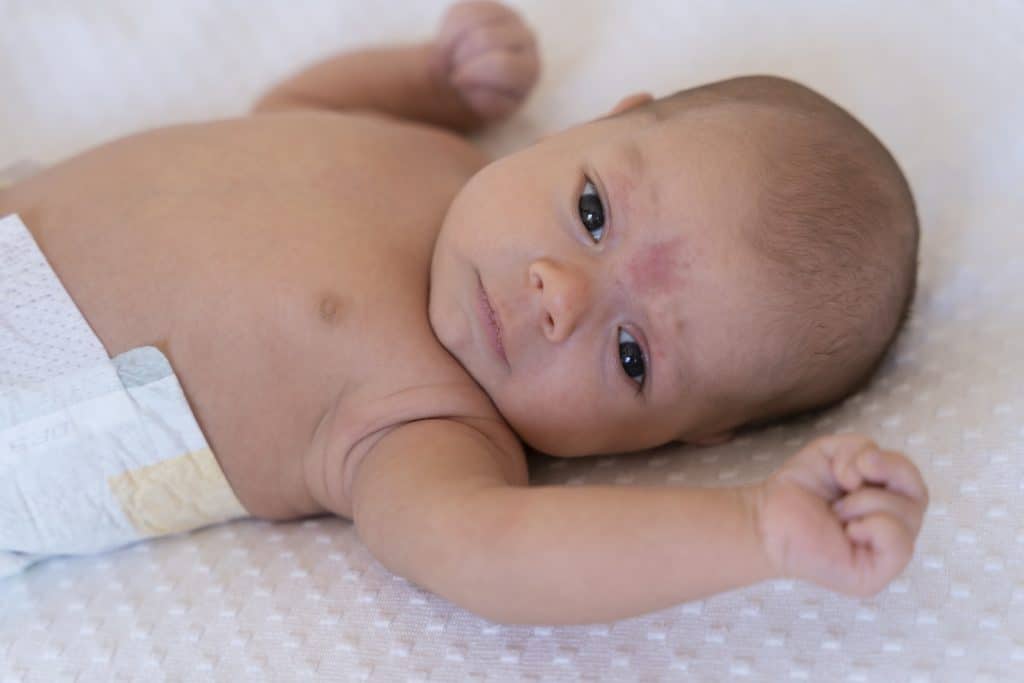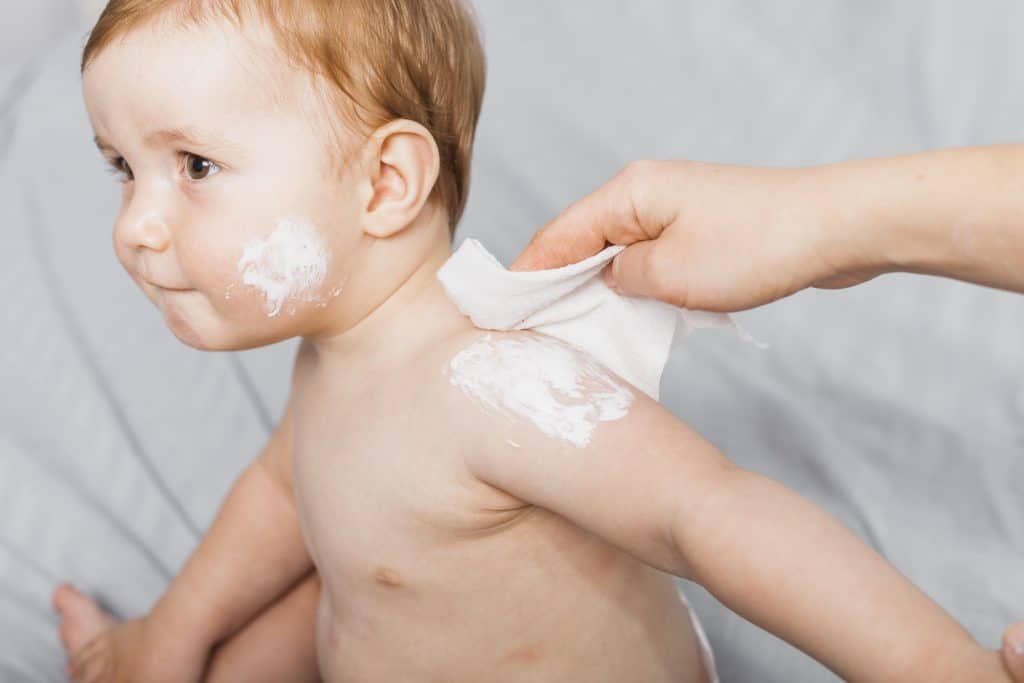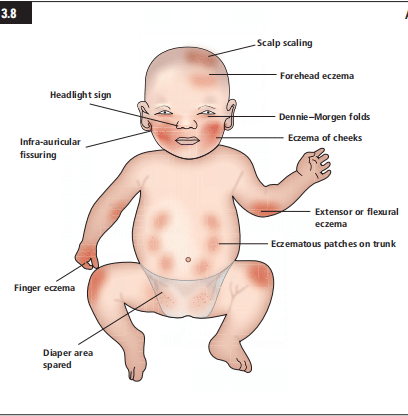Understanding Dermatitis in Infants
Infant dermatitis, often referred to as eczema, is a common but challenging skin condition that can cause significant discomfort for babies. This condition, which manifests as dry, itchy, and inflamed patches on the skin, can leave babies feeling irritated, which in turn leads to sleepless nights and fussy behaviour. For parents, this can be incredibly distressing to witness and manage.
Knowing how to care for an infant with dermatitis can make a world of difference. Early identification, understanding of the condition, and the implementation of an effective skincare routine with the right products are essential. In this guide, we’ll cover the basics of dermatitis, explore common triggers, and recommend safe, gentle treatments, including Bragan Skincare’s Atopic Cream, a powerful yet soothing cream enriched with snail mucin, formulated especially for sensitive and irritated skin. With the right approach, you can make your little one more comfortable and keep their delicate skin calm and protected.

What Is Dermatitis in Infants?
Dermatitis is a broad term for a range of inflammatory skin conditions that result in symptoms like itching, redness, and dryness. In infants, dermatitis can show up on various parts of the body, with the face, neck, and limbs being the most commonly affected areas. Infants typically suffer from three main types of dermatitis.
- Atopic Dermatitis: This is the most common form of dermatitis in infants and children. Often genetic, atopic dermatitis can appear within the first six months of life, usually on the cheeks, scalp, and arms. Scratching can exacerbate the persistent, itchy rash, leading to red and irritated skin.
- Seborrheic Dermatitis: This type, commonly known as cradle cap, typically appears on the scalp as greasy, yellowish scales and patches. Seborrheic dermatitis may also affect the neck, face, and diaper area.
- Contact Dermatitis: Triggered by direct exposure to irritants or allergens, this type of dermatitis appears as a red, itchy rash wherever the skin has been in contact with a triggering substance, such as soap, detergent, or rough fabrics.
Each type of dermatitis has distinct characteristics and may require slightly different approaches to care. Recognising these types helps parents select effective treatments and avoid specific triggers.
Common Symptoms of Dermatitis in Infants
Symptoms of infant dermatitis can vary widely in severity, from minor patches of dry skin to more extensive red, itchy, and sometimes oozing areas. Understanding the symptoms can help parents act promptly to relieve their child’s discomfort.
- Dry, Scaly Patches: Typically appear on the cheeks, forehead, scalp, and neck, although they can also show up on the arms and legs. These areas may feel rough to the touch and can appear flaky.
- Redness and Swelling: Inflamed skin appears red, swollen, and may feel warm. This is a sign of irritation, often due to the body’s inflammatory response.
- Persistent Itching: Infants with dermatitis may scratch or rub the affected areas, which can lead to further irritation, open sores, or even minor infections if bacteria enter broken skin.
- In more severe cases, dermatitis patches may become sore, crack, or release a yellowish fluid, indicating a compromised skin barrier that may require extra attention and soothing.
Parents often find it challenging to manage these symptoms, as babies may be too young to control their urge to scratch or rub itchy areas. This is where implementing a gentle, soothing skincare routine becomes essential, and finding the right products to protect the skin barrier can help prevent escalation of symptoms.
Causes and Triggers
While the exact cause of dermatitis is complex and varies from baby to baby, it generally involves a combination of genetic and environmental factors. Learning about potential triggers can empower parents to make informed decisions about their baby’s environment, clothing, and products used.
- Genetic Factors: Infants who have a family history of eczema, asthma, or other allergies are more likely to develop atopic dermatitis. Genetics play a significant role, as children with family members who have these conditions often have an overactive immune response to environmental irritants.
- Environmental Allergens: Substances like dust, pollen, pet dander, and even certain foods can sometimes trigger eczema in infants. For some babies, even a minor change in their surroundings can lead to flare-ups.
- Irritants: The presence of irritants like certain soaps, detergents, perfumes, and even rough or synthetic fabrics can exacerbate dermatitis. Products with artificial fragrances or harsh chemicals should be avoided, as they can worsen symptoms.
- Climate: Cold weather, dry air, or excessive heat can all lead to dry skin, increasing the likelihood of dermatitis flare-ups. Similarly, central heating in winter can remove moisture from the air, leading to drier skin.
Being proactive in creating a low-irritant environment can help minimise flare-ups. Use hypoallergenic laundry detergents, dress your infant in soft, breathable fabrics, and consider using a humidifier during dry seasons to maintain skin hydration.
How Common Is Infant Dermatitis?
Dermatitis is one of the most common skin conditions in infants, with atopic dermatitis alone affecting approximately 10-20% of babies worldwide. Many cases present within the first few months of life, making it a familiar experience for new parents. While many children outgrow infant dermatitis by age 2 or 3, some continue to experience flare-ups into childhood or adulthood. Early intervention and a solid skincare routine can make a significant difference in long-term outcomes and help parents better manage symptoms.

Recognising the Types of Dermatitis
Each type of infant dermatitis requires a tailored approach. Below are some details on each, including best practices for management:
Atopic Dermatitis
Atopic dermatitis is a form of eczema that often appears on the cheeks, arms, and legs. It may come and go, with periods of flare-ups and remission. Some helpful practices for managing atopic dermatitis include:
- Frequent Moisturising: Moisturising twice daily with a gentle, fragrance-free cream helps maintain skin hydration.
- Avoiding Harsh Fabrics: Use soft, breathable fabrics like cotton to avoid irritating sensitive skin.
- Minimising Environmental Triggers: Reducing exposure to potential allergens like dust, pollen, and pet dander may help reduce flare-ups.
Contact Dermatitis
Contact dermatitis appears as a rash that develops in response to a specific substance. Preventive measures include:
- Identifying and Avoiding Triggers: Track exposure to potential irritants, such as certain skincare products or soaps, and avoid those that cause reactions.
- Using Barrier Creams: A gentle cream can act as a protective barrier on sensitive skin, reducing the risk of irritation from external elements.
Seborrheic Dermatitis
The scalp commonly displays seborrheic dermatitis, also known as cradle cap. To manage cradle cap:
- Gentle Cleansing: Use a mild, unscented baby shampoo or cleanser to keep the scalp clean.
- Moisturising the Scalp: After bathing, apply a light, fragrance-free cream to help soften and prevent flakiness.
Diagnosing Dermatitis in Infants
When parents suspect that their baby may have dermatitis, consulting a paediatrician or dermatologist can help confirm the diagnosis and provide personalised care recommendations.
When to See a Doctor
Despite the fact that you can manage many dermatitis cases at home, you should consult a doctor
- The dermatitis is widespread or severe, impacting your child’s sleep and comfort.
- You notice any signs of infection, such as yellowish crusting or oozing.
- Over-the-counter treatments aren’t providing relief.
- You need guidance on managing specific triggers or selecting suitable skincare products.
Typical Diagnosis Process
Doctors typically diagnose dermatitis through a visual examination of the skin and a review of the child’s medical and family history. In some cases, they may recommend a patch test to help identify allergens or irritants that could be triggering the condition.

Treatment Options for Infant Dermatitis
Effective management of infant dermatitis requires a multi-faceted approach, including preventive care, home remedies, and, if necessary, medical treatments.
Home Remedies and Prevention
- Moisturise Regularly: Apply a fragrance-free, hypoallergenic cream to keep the skin hydrated.
- Avoid Known Triggers: Identifying and minimising exposure to triggers like allergens, irritants, or harsh soaps can help reduce flare-ups.
- Use Gentle Cleansers: Opt for mild, unscented cleansers to protect your baby’s skin barrier, ensuring it remains as intact as possible.
Importance of a Fragrance-Free, Gentle Cream
Fragrance-free creams are particularly essential for infants with sensitive skin, as fragrances can cause or worsen irritation. Look for creams that are gentle, hypoallergenic, and free of artificial additives. Creams like Bragan Skincare’s Atopic Cream, formulated specifically for sensitive skin with soothing ingredients like snail mucin, are ideal for managing infant dermatitis.
The Benefits of Snail Mucin in Skincare for Infants
For centuries, people have used snail mucin, a natural secretion, in skincare to soothe and heal delicate skin.
What Is Snail Mucin?
Snail mucin is a secretion that is rich in hyaluronic acid, glycoproteins, and various essential enzymes, all of which have powerful skin-soothing and healing properties. For infants, this natural ingredient provides gentle hydration and helps calm inflammation, making it an ideal solution for delicate, sensitive skin prone to dermatitis.
How Snail Mucin Helps with Infant Dermatitis
- Deep Hydration: Snail mucin is a natural humectant, meaning it helps the skin retain moisture by attracting water. This deep hydration is essential for preventing the dryness that worsens dermatitis.
- Soothing Inflammation: With anti-inflammatory properties, snail mucin helps to calm red, irritated skin, reducing the discomfort of itching.
- Supporting Skin Repair: Snail mucin aids in collagen production and skin regeneration, strengthening the skin barrier and promoting healing.
Why Bragan Skincare’s Atopic Cream Is Ideal
Bragan Skincare’s Atopic Cream, enriched with snail mucin, provides a safe, natural, and effective solution for managing infant dermatitis. This cream is fragrance-free, hypoallergenic, and crafted to suit even the most sensitive skin types. The hydrating and soothing effects of snail mucin in Bragan Skincare’s Atopic Cream offer relief from dryness and itchiness, making it an invaluable addition to your baby’s skincare routine.
Practical Tips for Parents
Caring for an infant with dermatitis can feel overwhelming, but establishing a consistent skincare routine can provide relief.
Daily Skin Care Routine for Infants with Dermatitis
- Bathing: Keep baths short and use lukewarm water. Avoid hot water, which can dry out the skin. After the bath, pat the skin dry with a soft towel instead of rubbing.
- Moisturising: Immediately after bathing, apply a gentle, fragrance-free cream to lock in moisture and prevent dryness.
- Handling Flare-Ups: Identify potential triggers, keep the skin hydrated, and apply calming creams when necessary.
What to Avoid for Sensitive Skin
- Fragrances and Dyes: Use products labelled fragrance-free and hypoallergenic to avoid additional irritation.
- Harsh Soaps: Mild cleansers designed for infants are less likely to strip the skin’s natural moisture.
- Rough Fabrics: Soft, breathable fabrics like cotton are gentle on the skin and help avoid friction or irritation.
Conclusion
Managing dermatitis in infants requires dedication, understanding, and the right tools. By implementing a gentle skincare routine and choosing products formulated for sensitive skin, parents can help their babies feel more comfortable and experience less irritation. Bragan Skincare’s Atopic Cream, with the healing properties of snail mucin, is a safe, effective solution to incorporate into your child’s routine. This cream not only moisturises but also soothes and strengthens the skin, offering relief and promoting healthier skin.
Atopic Cream for Sensitive Skin
Our atopic cream is designed to treat skin conditions. These may be inherited or as a result of sensitivity to allergens such as soaps, detergents, stress and the weather. Made from snail mucin – a natural ingredient with a wealth of healing, hydrating, and anti-inflammatory properties. Our Atopic Cream is dermatologically tested and effective in treating chronic skin conditions including eczema, psoriasis, and dermatitis. It brings relief to those suffering from irritated or itchy skin, rashes and allergic reactions. Snail mucin also reduces scar tissue and stretch marks and is soothing for dry and sensitive skin. Incorporate snail mucin cream…
Featured Bragan Skincare Products
-
€39.99 – €100.00Price range: €39.99 through €100.00Select options This product has multiple variants. The options may be chosen on the product page
-
€100.00Select options This product has multiple variants. The options may be chosen on the product page


